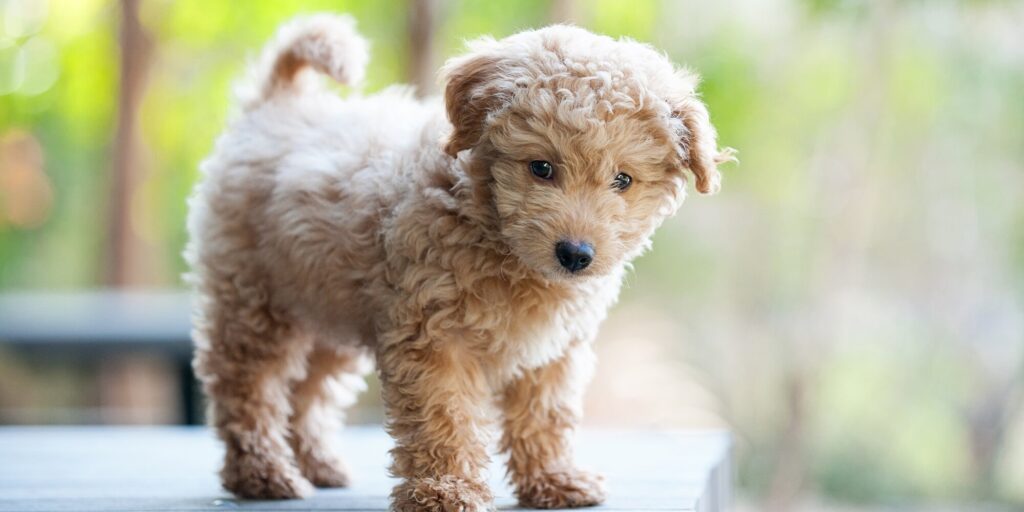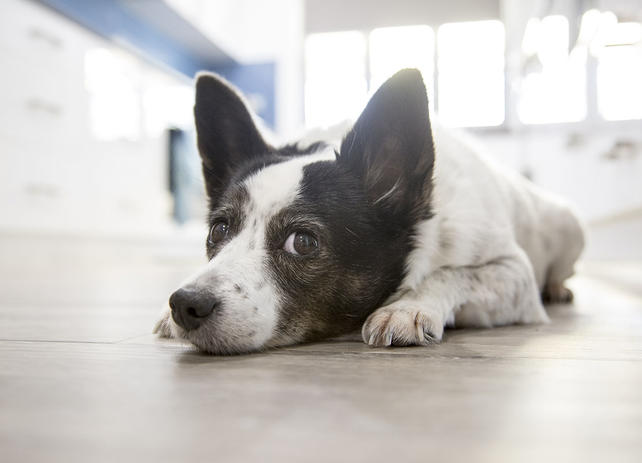Once you bring your new dog home, it’s smart to begin some training tips immediately. But where should you start? What’s the best way to train a puppy?
Top 10 Dog Training Tips
These top 10 tips from professional dog trainers will help get you and your new pal on the right track.
There are a number of options for training your new pet. Ideally, your pup should think of their name in the same way they think about other fun stuff like walks or dinnertime. And how do you train an adult dog?
Tip 1: Choose Your Dog’s Name Wisely
Part of the fun of bringing home a new puppy or dog is finding the perfect name for them. But did you know certain names are better for training? It helps to consider a short name ending with a strong consonant that they can always hear clearly. A strong ending, like in the names “Jasper,” “Jack” and “Ginger,” perks up puppy ears – especially when you place emphasis at the end.
If your new pet is an older dog, they’re probably used to their name at this point. However, changing it isn’t out of the question. And if your brand-new pal is coming out of an abusive situation, a fresh name may even represent a fresh start. Dogs are extremely adaptable. If you decide to give them a new name, use it consistently and soon enough your pup will respond to it.
Whatever their name, be sure to associate it with fun, pleasant experiences as much as possible, rather than negative ones. Whether you opt to train your puppy or dog yourself, take classes or hire a private trainer, you can implement the following basic training tips right away to make the process easier.
Tip 2: Decide on the House Rules
Before your new furry pal comes home, decide what they can and can’t do. Are they allowed on the bed or the furniture? Are parts of the house off limits? Will they have their own chair at your dining table? If the rules are determined early, you can avoid confusion – for both of you.
Tip 3: Set Up a Private Den
Like humans, dogs need their own space. As early as possible, give your pup their own private sleeping place, such as a crate. Your dog will benefit from short periods left alone in the comfort and safety of their den; it can also be a valuable tool for housetraining. Be sure to reward your puppy or dog if they remain relaxed and quiet in their den.

Tip 4: Help Your Dog Relax
When your puppy gets home, give them a warm hot-water bottle and put a ticking clock near their sleeping area. This imitates the heat and heartbeat of litter mates and will soothe your pup in their new environment.
This tip may be even more important for a new dog that previously lived in a busy, loud shelter, particularly if they’ve had a rough time early in life. Whatever you can do to help your new pet get comfortable within their forever home will be good for you both.
Tip 5: Reward Good Behavior
Reward your puppy or dog’s good behavior with positive reinforcement. Use toys, love and lots of praise – and don’t forget the treats, such as DENTASTIX™ treats. Let them know when they’re getting it right. Along those same lines, never reward bad behavior, as it’ll only confuse them.
Tip 6: Teach Your Pup to Come When Called
Come, Jasper! Good boy!
The first command you teach your pet should be to come. Get down on their level and tell your pup to come using their name. When they do, get excited and use lots of positive reinforcement. Next time, try the “come” command when they’re distracted with food or a toy. As your puppy gets older, you’ll continue to see the benefits of perfecting this command.
Tip 7: Train on “Dog Time”
Puppies and dogs live in the moment – two minutes after they’ve done something, they’ve already forgotten about it. So when your pup is doing something bad, use your chosen training technique right away so they have a chance to make the association between the behavior and the correction. Consistent repetition will reinforce what they’ve learned.
Tip 8: Discourage Jumping Right Away
Puppies love to jump up in greeting, and some adult dogs have learned bad habits. When your pup or dog jumps on a person, don’t reprimand them; just turn your back on them, ignore the behavior and wait until they settle down before giving positive reinforcement. Never encourage jumping habits by patting or praising your dog when they’re in a “jumping up” position.
Tip 9: Say No to Biting and Nipping
Instead of scolding your new pet, a great way to discourage your mouthy canine is to pretend you’re in a lot of pain when they bite or nip you – a sharp, loud yell should work. Most dogs are so surprised that they stop immediately.
If verbal cues don’t work, try trading a chew toy for your hand or pant leg. This swap trick can also work when a puppy discovers the joys of chewing on your favorite shoes. They tend to prefer a toy or bone anyway. If all else fails, interrupt the biting behavior and respond by ignoring them.
Tip 10: End Training Sessions on a Positive Note
Your puppy or dog has worked hard to please you throughout their training. Leave them with lots of praise, a treat, some petting or five minutes of play. This almost guarantees they’ll show up at their next class or training session with their tail wagging, ready to work!
Bonus tip: When your puppy is old enough, think about getting them neutered or spayed. The same goes if you adopt a dog. A neutered or spayed dog might be more docile, less aggressive and more open to successful training.
By Dog Care Tip

